Identify (A) and (D).
a. 
b. What would be the structure of (A), if on reaction with (Na+EtOH) or (H2+Ni2B), it gives an optically active compound?
a. DU in (A)=(2×8+2)−122=3∘
DU in (B)=(2×8+2)−182=0∘
Reaction of (A) with (H2+Ni+B) shows that it has (−C≡C−) bond, and it is internal alkyne because (A) does not react with [Ag(NH3)2]⊕ (shows the absence of terminal alkyne).
Zero degree of unsaturation in (B) suggests that there is no ring in (A) or (B).
Therefore in (A), there is one (C≡C) bond (2 DU) and one (C=C) (1 DU).
(A) is optically active, containing one internal alkyne group, one (C=C) group, one H and one Me group, also, it is a compound with total eight C atoms.
Possibility of (A):
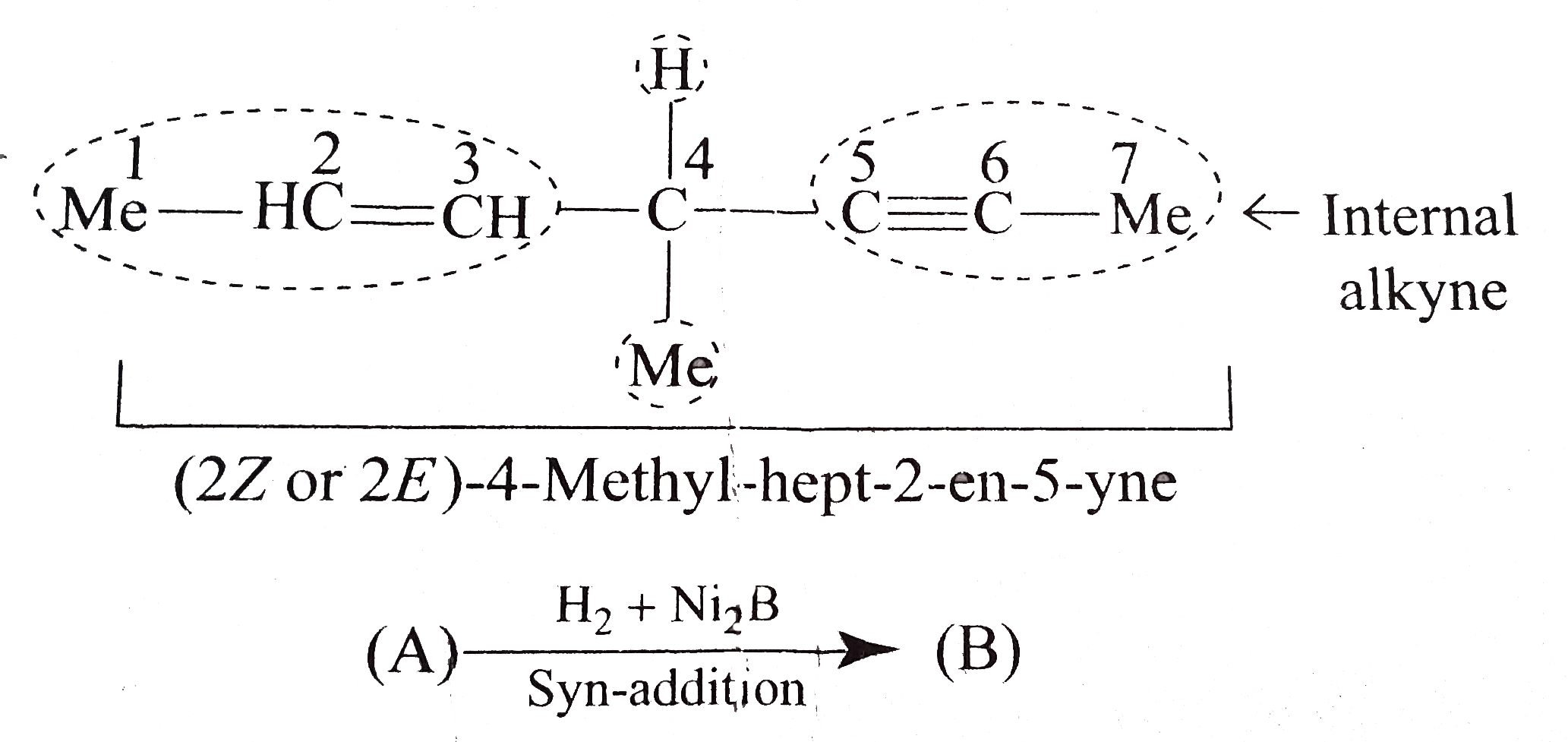
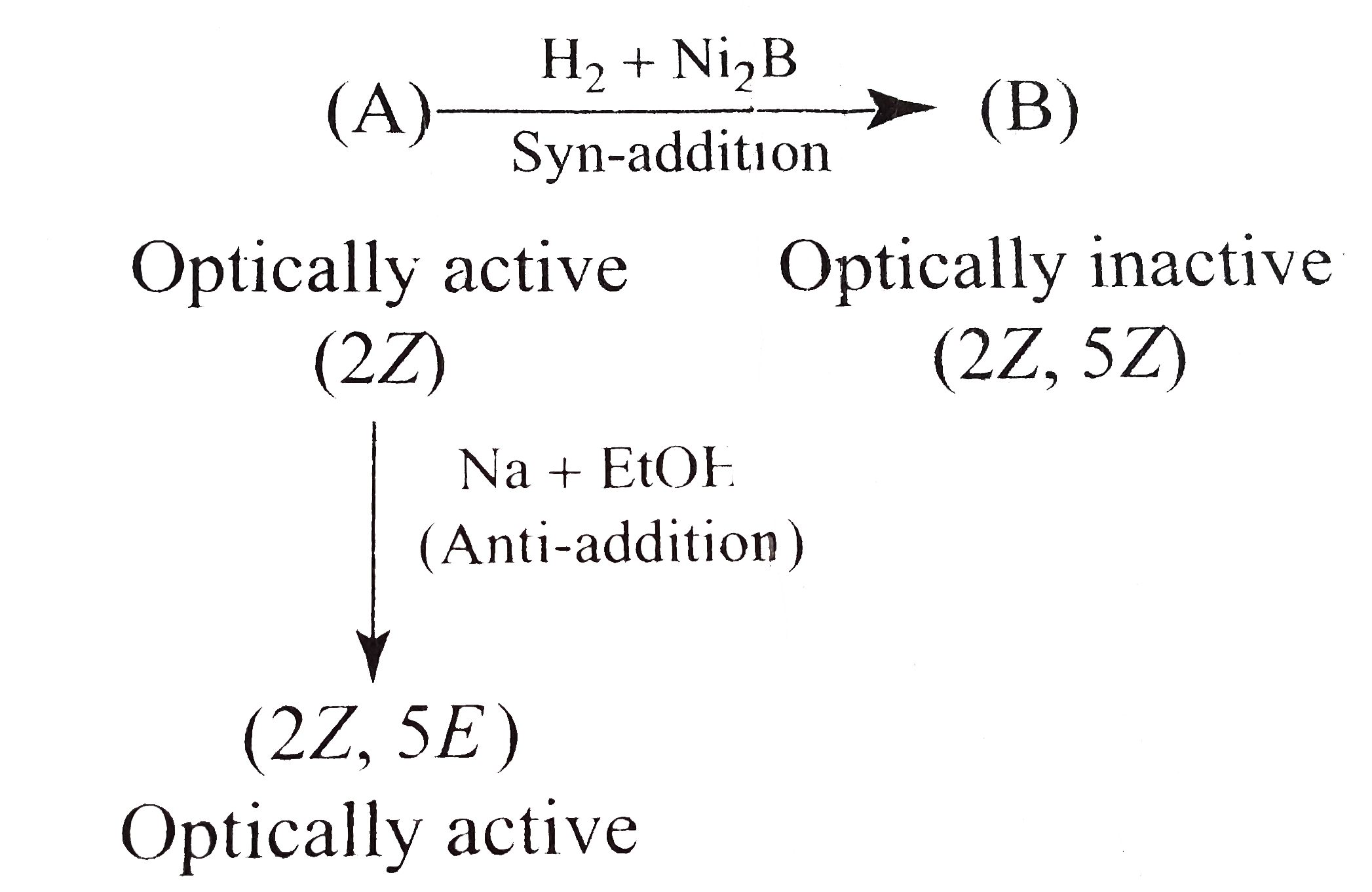
Therefore, (A) is 2Z−4-Methylhept-2-en-5-yne.
Reactions:
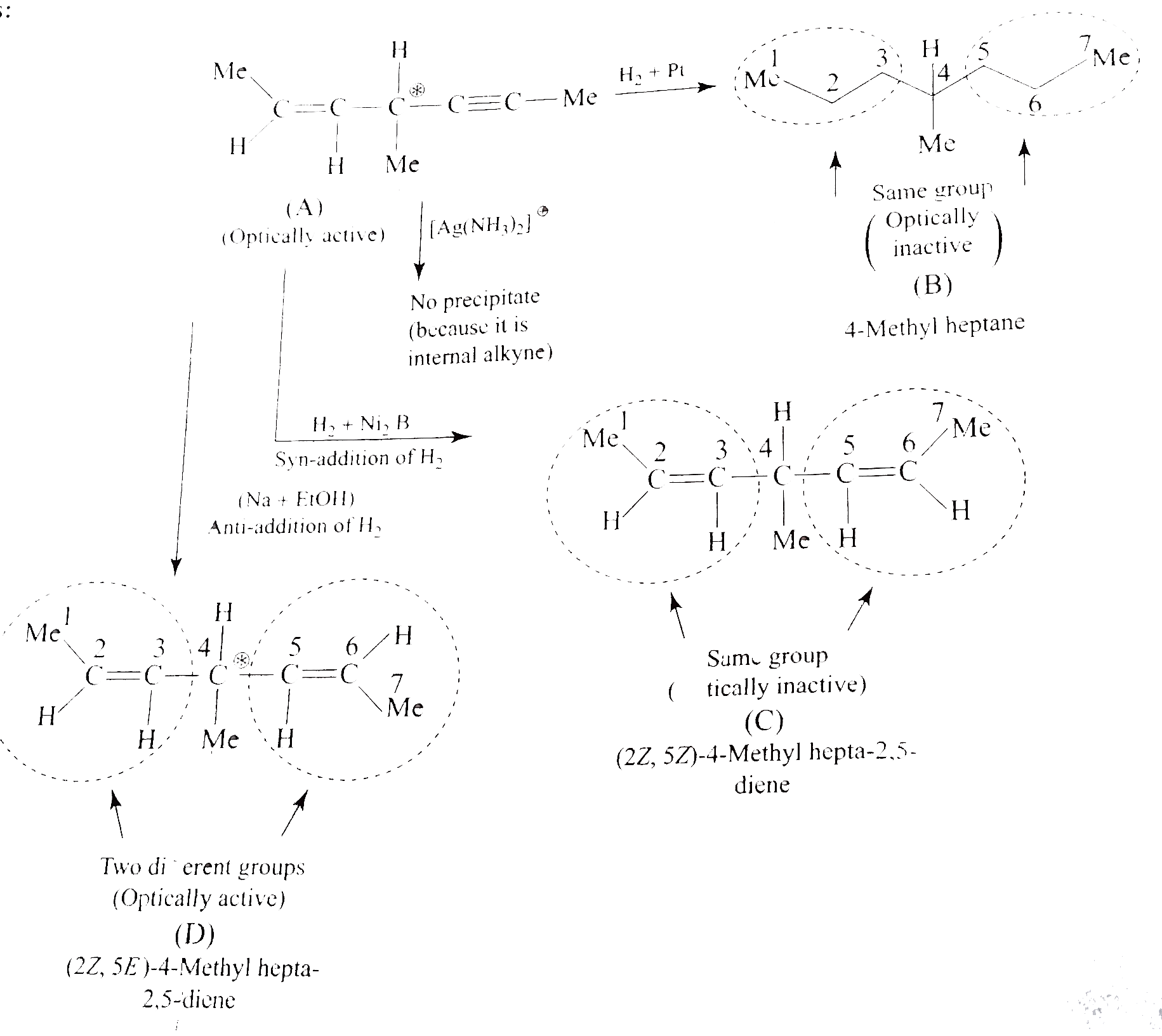
b. In order to get an optically active compound, regardless of the method of reducing (C≡C) bond (syn- or anti-addition, either by Na+EtOH or by H2+Ni2B), position of (C=C) should be the terminal one.
The possibility of A:
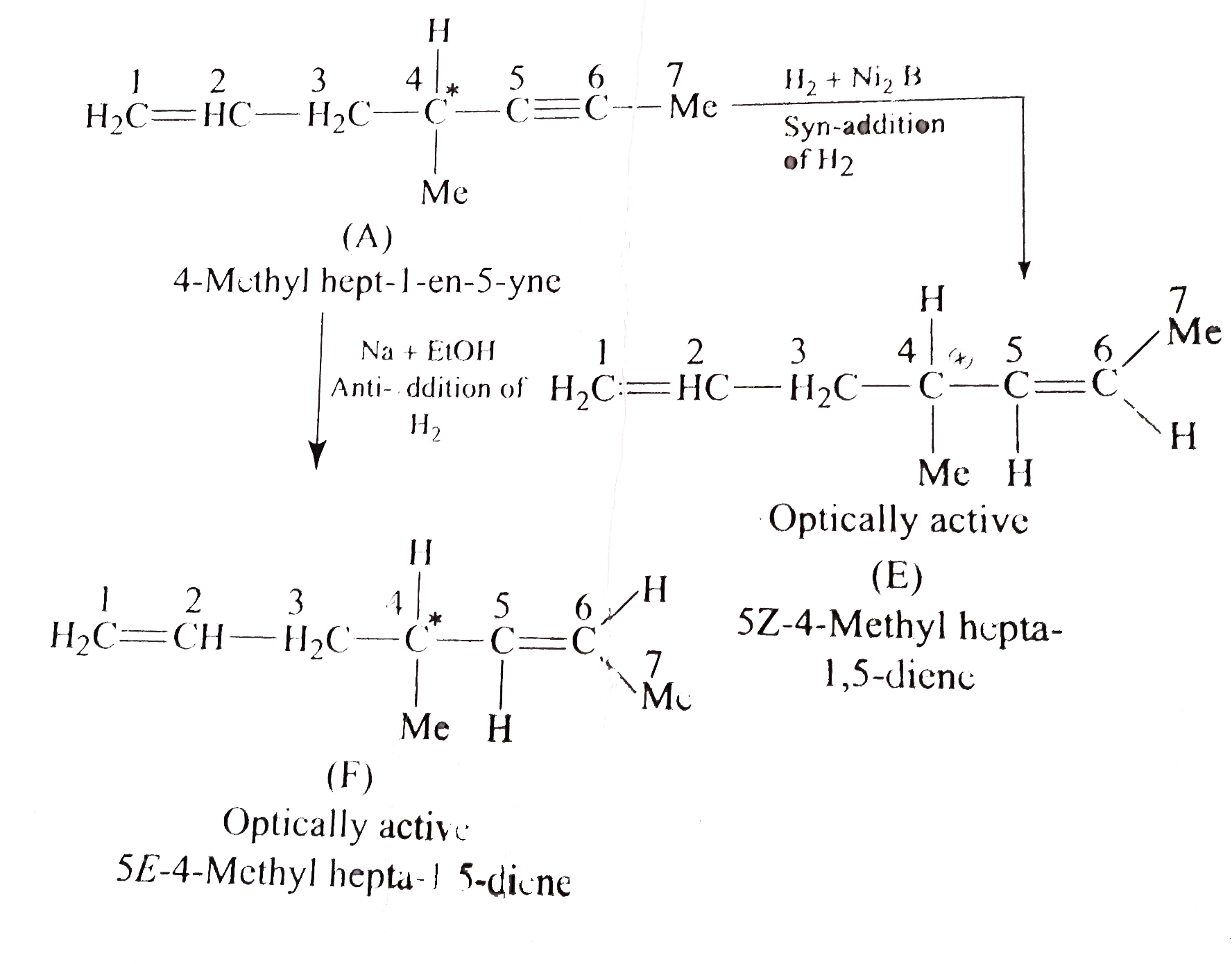
Topper's Solved these Questions
- ALKYNESBOOK - CENGAGE CHEMISTRYCHAPTER - ALKYNESEXERCISE - Solved Examples
24 Videos
- ALKYNESBOOK - CENGAGE CHEMISTRYCHAPTER - ALKYNESEXERCISE - Exercises (Subjective Type)
31 Videos
- ALKENES AND ALKADIENESBOOK - CENGAGE CHEMISTRYCHAPTER - ALKENES AND ALKADIENESEXERCISE - Single correct Answer
14 Videos
- APPENDIX - INORGANIC VOLUME 1BOOK - CENGAGE CHEMISTRYCHAPTER - APPENDIX - INORGANIC VOLUME 1EXERCISE - chapter-7 Single correct answer
1 Videos
Similar Questions
(W) and (X) are optically active isomers of C5H9Cl(W) on treatment with one mole of H2 is converted to an optically inactive compound (Y). But (X) gives an optically active compound (Z) under the same conditions Give the structure of (Y) and configuration of (W),(X) and (Z) in Fischer projections.
View Solution(W) and (X) are optically active isomers of C6H9CI. (w) on treatment with 1 mol of H2 is converted to an optically inactive compound (y) but (x) gives an optically active compound (Z) under the same conditions. Give structure of (Y) and configurations of (W) ,(X) nad (Z) in Fischer projections.
View Solution
Knowledge Check
C5H13N reacts with HNO2 to give an optically active alcohol The compound is
APentan-1-amineBPentan-2-amineCN,N-dimethylpropan-2-amineDN-methylbutan-2-amineOptically active isomer (A) of (C5H9Cl) on treatment with one mole of H2 gives an optically inactive compound (B) compound (A) will be :
A B
B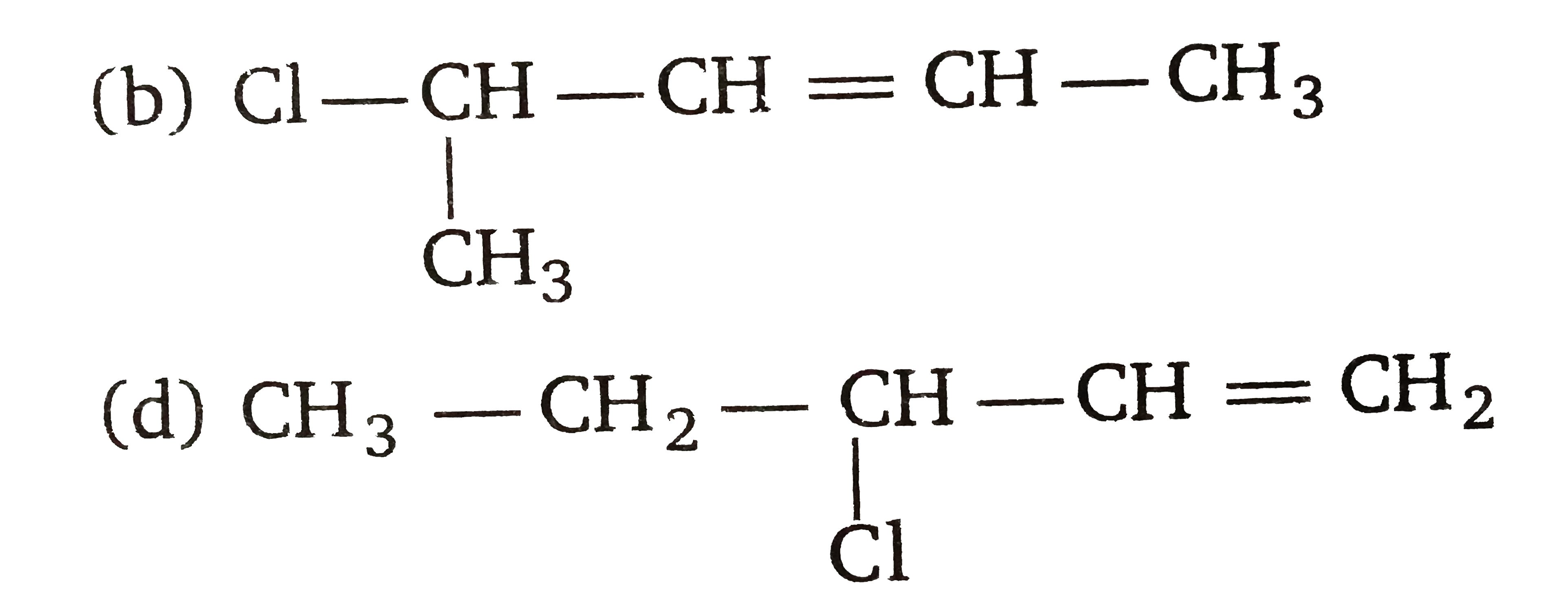 C
C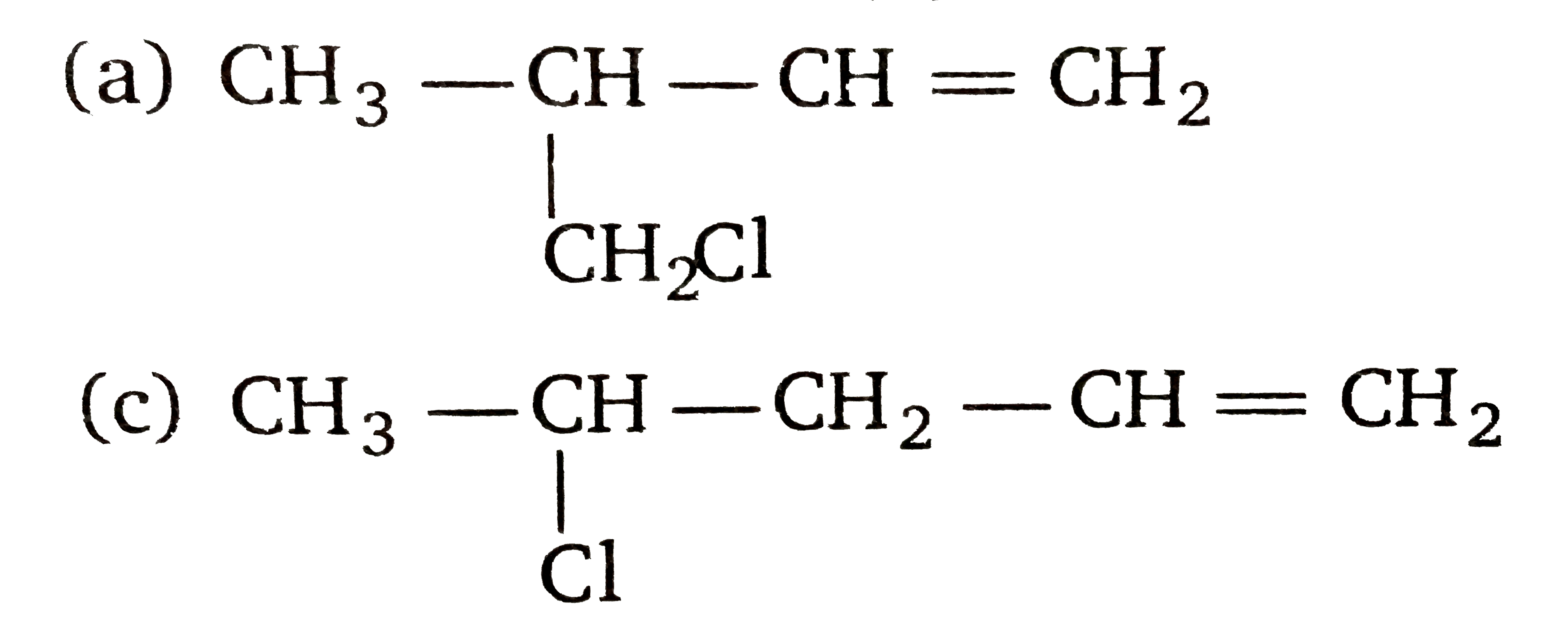 D
D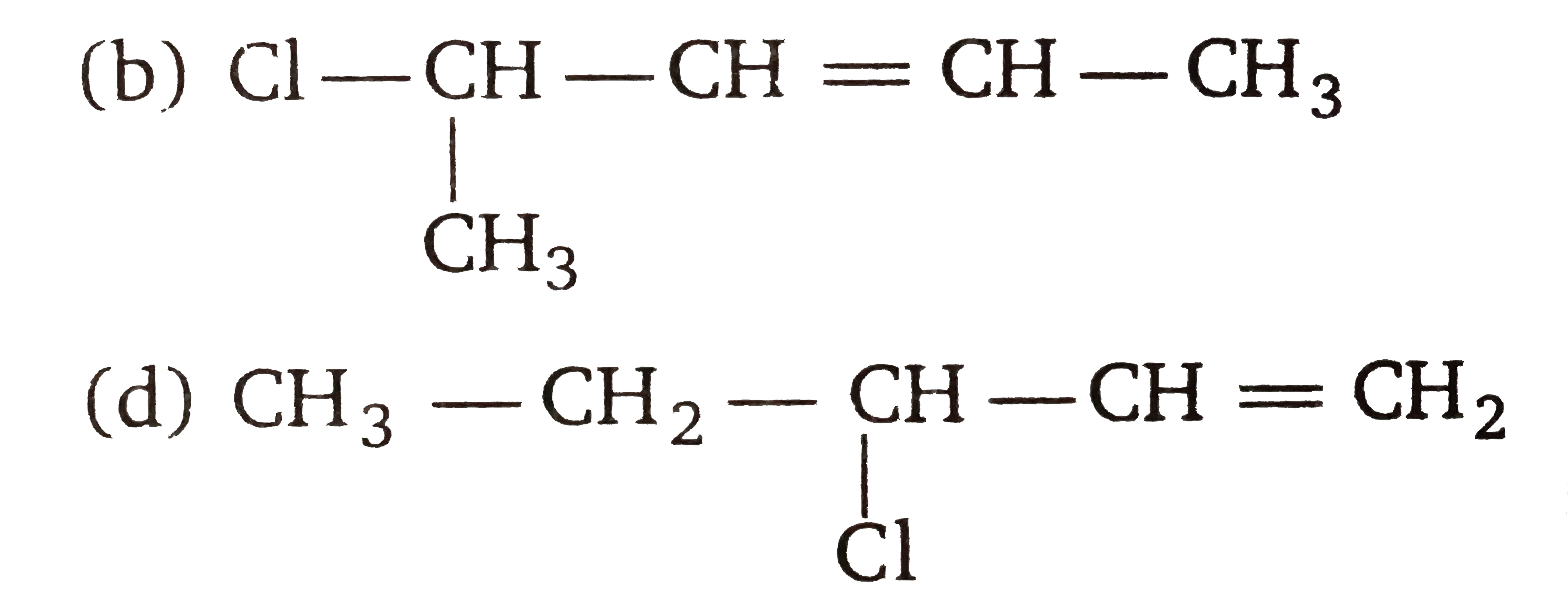
Two isomeric halo alkenes (A) and (B) have molecular formula C5H9Cl. (A) gives optically inactive compound whil (B) give optically active compound in hydrogenation. The two iosmers respectively are:
A3-chloro-1-pentane and 4-chloro-2-penteneB4-chloro-1-pentene and 2-chloro-2-penteneC3-chloro-2-pentene and 1-chloro-2-penteneD1-chloro-1-pentene and 5-chloro-1-pentene
C(C6H12), and optically active dydrocarbon which on catalytic hydrogenation gives an optically inactive compound, C6H14.
View SolutionGive structures of the four optically active structural isomers of C4H8O3 (A to D) and evolve CO2 with aq. NaHCO3. Find the structure of (A), the isomer that reacts with LiAlH4 to give an achiral neutralization equivalent of 74. Alcohol (B) is not oxidized with an acid solution of Na2Cr2O7. What is the formula and name of the original compound?
View SolutionGive the structure of an optically active alkene (A) having the lowest molecular mass, which on catalytic hydrogenation gives an optically inactive compound (B).
View SolutionGive the structure of an optically active alkyne (A) having the lowest molecular mass, which on hydrogenatio with Lindlar's catalyst and Birch reduction gives the same lowest molecular mass optically active alkene. Also explain why. ltbr> But alkyne (A) on hydrogenation with D2, with Lindlar's catalyst, and reduction with Na+liq. ND3+EtOH gives a different optically active alkene. Explain.
View SolutionAn optical inactive amine (A) C4H11N on treatment with HNO2 give an alcohol (B ) , The Compound (B ) on heating with conc. H2SO4 at 453 K give an alkene ( C ) . The C on treatment with HBr give an optical active compound (D ) having molecular formula C4H9 Br. Identify (A )
View Solution
